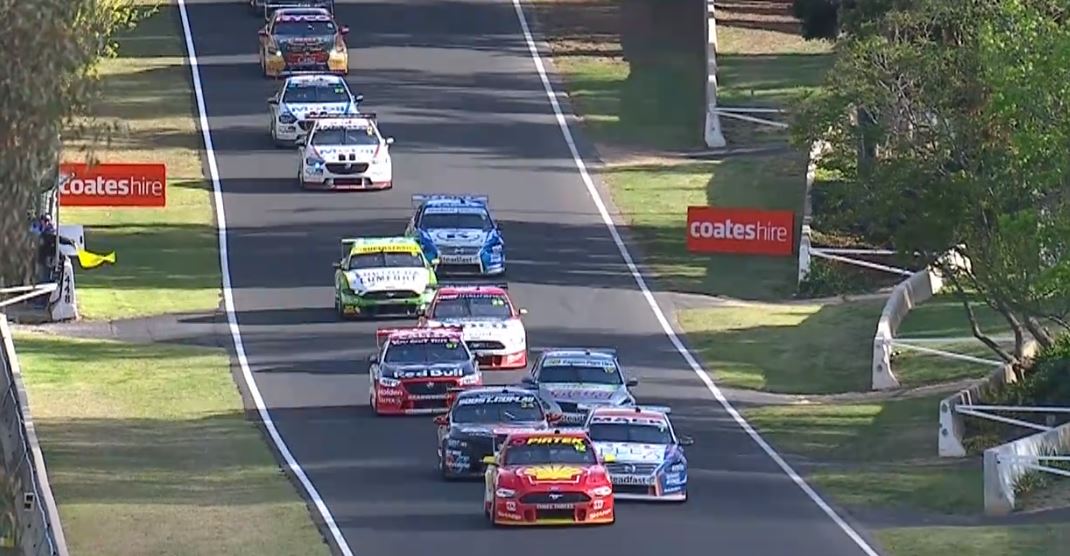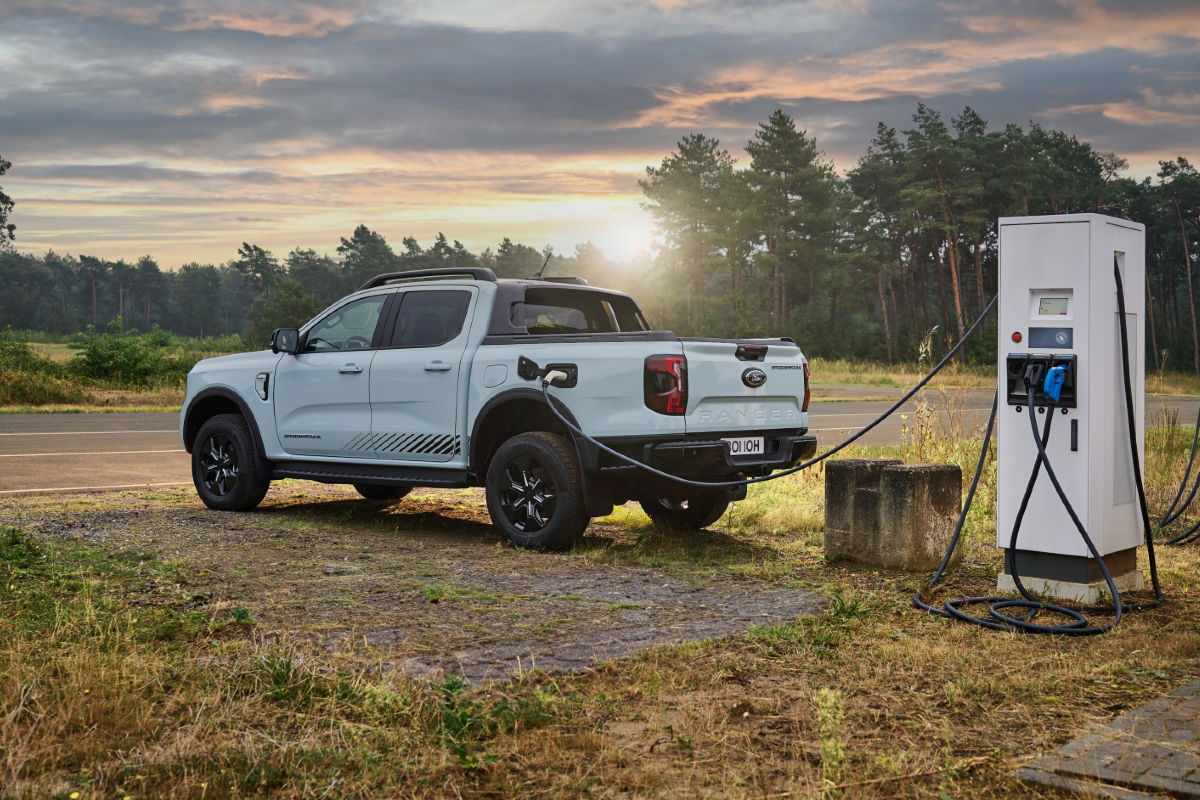

With the hearing now complete and penalties issued, Speedcafe.com presents its analysis of the impact of Fabian Coulthard’s slowdown during the Supercheap Auto Bathurst 1000.
In the hours following the Supercheap Auto Bathurst 1000, Speedcafe.com revealed an investigation was ongoing into Shell V-Power Racing for the way in which it handled the Safety Car on Lap 135.
DJR Team Penske was found to have breached the FIA International Sporting Code although it should be noted that, having conducted the decisive hearing, stewards “are prepared to assume that there was no intention to advantage Car #17,” the squad’s race winning car.
At the time of the incident, there was conjecture as to whether or not Coulthard’s slowdown had a significant impact on the race results. However, Speedcafe.com has taken the time to extensively review lap timing and television footage in an effort to make sense of how events unfolded.
While it is impossible to predict with any certainty how the race would have unfolded after that specific Safety Car, our analysis suggests DJR Team Penske’s actions had significant impact on the race order during a critical phase of the race.
Assumptions
Team data, such as precise fuel burn figures, are a closely kept secret and therefore we have had to approximate those values by extrapolating from timing data.
In this instance, we’ve used a figure of 4.78 litres of fuel burned per lap on average during green flag running, which equates to approximately 110 litres lasting about 23 laps.
Supercars have a 112-litre fuel tank, but not all of that fuel is usable, and a 23 lap stint is in keeping with what was seen during Sunday’s race.
The fuel burn figure will vary slightly with some cars able to get slightly better, and some cars slightly worse mileage, however it is a reasonable approximation.
We’ve also assumed the fuel burn halves while running behind the Safety Car.
Another assumption we’ve made is that all teams performed perfect pit stops, with no fumbling, and that all entries and departures from the box would have been perfect.
While the gaps between drivers are, for the most part, large enough to allow for some natural variation, it’s impossible to accurately predict and therefore cannot be factored in.
Finally, as strategically there seems little to nothing to have been gained by short filling at the previous stop, we’re assuming all cars were brimmed at that point, and needed only to be topped up to full at Lap 135.
Understanding fuel loads
That 4.78L/lap figure allows us to calculate approximately how much fuel each car was carrying at the point the Safety Car was deployed on Lap 135, and therefore how long they needed to remain stationary – a crucial piece of information in determining the impact of Coulthard’s slowdown.
Speedcafe.com analysed all lead lap runners on Lap 135, with their individual strategy taken into account when calculating their individual circumstances to understand the probable shape of the race had the field reacted normally once the Safety Car was announced.
We’ve then compared this with what happened in reality to paint a picture of the impact of the Lap 135 Safety Car.
The leading four runners had last stopped on Lap 113, while James Golding in fifth stopped one lap later, and Rick Kelly in sixth one lap later still.
Sitting seventh, Shane van Gisbergen stopped on Lap 123, anticipating the Safety Car after Chaz Mostert and Cam Waters came together at The Chase late in the lap.
Using our fuel burn figure of 4.78L/lap, and assuming he was fueled to full in that stop (as well as accounting for a lesser fuel burn under the Lap 127 Safety Car), van Gisbergen had approximately 69 litres of fuel remaining in his tank at the end of Lap 135.
With a fill rate of 3.75L/second, he would therefore have had to remain stationary for 11.5 seconds for his tank to be filled.
Having stopped last on Lap 113, Whincup, McLaughlin, Coulthard, and Heimgartner all needed to be stationary for 22.3 seconds, a delta of 10.8 seconds over van Gisbergen.
Forecast fuel fill times at end of Lap 135
| Pos | Car | Drivers | Team | Gap* | Fill Time |
| 1 | 888 | Whincup/Lowndes | Red Bull Holden Racing Team | 22.3188s | |
| 2 | 17 | McLaughlin/Premat | Shell V-Power Racing Team | +0.3696s | 22.3188s |
| 3 | 12 | Coulthard/D’Alberto | Shell V-Power Racing Team | +1.6255s | 22.3188s |
| 4 | 7 | Heimgartner/Fullwood | Plus Fitness Racing | +2.4731s | 22.3188s |
| 5 | 34 | Golding/Muscat | Boost Mobile Racing | +4.8148s | 21.6812s |
| 6 | 15 | Kelly/Wood | Castrol Racing | +5.9661s | 21.0435s |
| 7 | 97 | van Gisbergen/Tander | Red Bull Holden Racing Team | +6.5114s | 11.4783s |
| 8 | 23 | Davison/Davison | Milwaukee Racing | +6.9877s | 21.0435s |
| 9 | 5 | Holdsworth/Randle | The Bottle-O Racing Team | +7.5901s | 12.7536s |
| 10 | 3 | Jacobson/Fiore | RABBLE.club Racing | +8.3032s | 14.0290s |
| 11 | 2 | Pye/Luff | Mobil 1 Racing | +9.7322s | 11.4783s |
| 12 | 22 | Courtney/Perkins | Mobil 1 Racing | +10.4638s | 10.8406s |
| 13 | 9 | Reynolds/Youlden | Penrite Racing | +10.7586s | 10.8406s |
| 14 | 33 | Stanaway/Pither | Boost Mobile Racing | +14.0895s | 10.8406s |
| 15 | 18 | Winterbottom/Richards | Irwin Racing | +16.2785s | 8.2899s |
* At end of Sector 1 on Lap 135
The race under a ‘normal’ Safety Car
Using the sector data available through timing we can establish a fairly accurate gap from the leader to each car, as shown in the Gap column in the above table, though it should be highlighted that data is compromised from the second sector on Lap 135 as the Safety Car is called and the slowdown began.
Even still, it provides a useful indication of the order the field could have been had it raced back to the pit lane, as is the norm in these situations.
Under normal circumstances it would have been reasonable to suggest that van Gisbergen would not have stopped, as alluded to by Garth Tander during the race telecast, as the Safety Car interruption did not fall well for the #97 car’s strategy and would have seen it stack behind Whincup.
Similarly, Coulthard would have been stacked behind McLaughlin, which would have resulted in him losing track position (more on that below).
Based on the knowledge that he would have continued rather than taking to the lane without the slowdown, it’s highly probable that van Gisbergen would have led though with one stop still to be served somewhere around Lap 148.
This decision would have trapped all lapped cars, who’d have almost certainly carried on beyond the pit lane in the hope of regaining a lap, before stopping the next time around.
Forecast race order after pit stops under ‘normal’ circumstances
| Pos | Car | Drivers | Team | Gap to #888 (pit exit) | Actual Position (Change to actual) |
| 1 | 97 | van Gisbergen/Tander | Red Bull Holden Racing Team | Remained on track | 4 (-3) |
| 2 | 5 | Holdsworth/Randle | The Bottle-O Racing Team | -1.9751s | 9 (-7) |
| 3 | 2 | Pye/Luff | Mobil 1 Racing | -1.1084s | 7 (-4) |
| 4 | 9 | Reynolds/Youlden | Penrite Racing | -0.7197s | 8 (-4) |
| 5 | 3 | Jacobson/Fiore | RABBLE.club Racing | +0.0133s* | 11 (-6) |
| 6 | 888 | Whincup/Lowndes | Red Bull Holden Racing Team | 1 (+5) | |
| 7 | 17 | McLaughlin/Premat | Shell V-Power Racing Team | +0.3696s | 2 (+5) |
| 8 | 18 | Winterbottom/Richards | Irwin Racing | +2.2495s | 5 (+3) |
| 9 | 7 | Heimgartner/Fullwood | Plus Fitness Racing | +2.4731s | 6 (+3) |
| 10 | 34 | Golding/Muscat | Boost Mobile Racing | +4.1771s | 3 (+7) |
| 11 | 23 | Davison/Davison | Milwaukee Racing | +5.7123s | 12 (+1) |
| 12 | 22 | Courtney/Perkins | Mobil 1 Racing | +21.5872s** | 14 (-2) |
| 13 | 33 | Stanaway/Pither | Boost Mobile Racing | +23.2470s** | 13 (-) |
| 14 | 15 | Kelly/Wood | Castrol Racing | +39.8693s** | 15 (-1) |
| 15 | 12 | Coulthard/D’Alberto | Shell V-Power Racing Team | +43.3818s** | 10 (+5) |
*The Jacobson/Fiore entry is ahead of Whincup/Lowndes as the time difference is so small that it would have been impossible to release Whincup ahead of the Kelly Racing entry.
**Forced to stack in pit lane behind team-mates.
The predicted order
Of those who stopped, it’s therefore likely that Lee Holdsworth would have emerged first.
He trailed Whincup by about 7.6s heading into the lane, but needed 9.6s less fuel, meaning the Bottle-O Mustang would have beaten the Red Bull Holden Racing Team entry out.
It’s important to point out that, with 26 laps to the flag, short filling was not a viable option as it locked teams in to having to stop at least once more.
Teams in that position would have been better served gaining track position by staying out, as van Gisbergen would have, and sprinting clear at the restart.
Behind Holdsworth in the lane, the Walkinshaw Andretti United entry of Scott Pye and Warren Luff would have been out in a net third, though possibly an effective second accounting for van Gisbergen’s need to stop again.
The Erebus entry of David Reynolds and Luke Youlden would have been next out, and then the Garry Jacobson/Dean Fiore Nissan.
Interestingly, the Nissan would have been alongside the Red Bull Holden Racing Team pit box as Whincup dropped, and would have slotted in ahead since the team wouldn’t be able to release Whincup at that point.
There were further changes down the order too, though the key point is that the race’s leading protagonists would likely have found themselves comparatively buried in the field, while van Gisbergen was on a compromised strategy that required him to take significant risk to repeatedly set fast times.
The impact of the slowdown
In reality, Coulthard’s actions created a significant gap which allowed Whincup and McLaughlin the opportunity to pit and resume the race without any threat to their position besides that posed from one another.
Instead it saw some big winners, such as Mark Winterbottom who climbed 10 spots, and big losers like Rick Kelly who fell nine after stacking behind Andre Heimgartner – though stacking was unavoidable for many in either circumstance.
Once the race resumed there would still have been the strategic divergence, with some sprinting in the hope they could build an advantage and resigning themselves to another stop, just as Golding and Whincup did, and others conserving fuel in an effort to stretch it to the finish.
The difference however would have been those who had track position, and whether that would have impacted their decision making and strategic approach to the race’s closing stages.
Beyond the Lap 137 restart it is impossible to predict with any certainty what may have happened, though we can with some confidence discern that Coulthard’s slowdown had a significant impact on the overall order of the race.



















